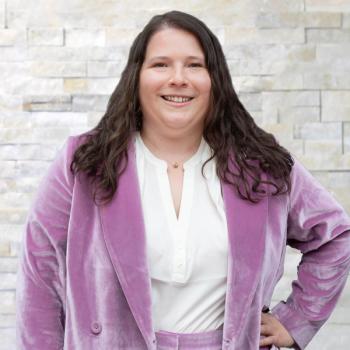
Talk on 3D Printing and Chemical Imaging Draws Crowd at Local SAS Meeting at Fairleigh Dickinson University
The October meeting of the New York–New Jersey chapter of the Society for Applied Spectroscopy (NYSAS) drew a large crowd to hear a talk on three-dimensional (3D) printing and chemical imaging by Emil Ciurczak, a consultant on laboratory and process applications of near-infrared (NIR) spectroscopy.
The October meeting of the New York–New Jersey chapter of the Society for Applied Spectroscopy (NYSAS) drew a large crowd to hear a talk on three-dimensional (3D) printing and chemical imaging by Emil Ciurczak, a consultant on laboratory and process applications of near-infrared (NIR) spectroscopy. The meeting, held on October 25 at Fairleigh Dickinson University (FDU), was organized jointly by NYSAS and the Department of Chemistry and Pharmaceutical Science of FDU, with its student affiliates of the American Chemical Society and the Gamma Sigma Epsilon Chemistry honor society.
Ciurczak, who has worked in or with the pharmaceutical industry since 1970 and who was a pioneer in the use of NIR for pharmaceutical applications, focused his talk on the use of these technologies in a pharmaceutical and health-care context. Common examples of health-care uses of 3D printing, Ciurczak explained, include creating replacement joints and solid dosage forms. In the future, he noted, it may even be possible to use 3D printing to create biological “replacement parts” including hearts, skin, and hip and knee joints. The VTT Technical Research Centre of Finland has developed a method for printing proteins onto adhesive bandages that help promote skin growth for flexible (not stiff) scar tissue. Three-dimensional printing could also be valuable for developing countries in reducing the costs of health-care supplies, even for equipment such as stethoscopes.
A key advantage of 3D printing is that small batches of varying composition can be made inexpensively. For solid dosage forms, tablets that meet specific needs of individuals based on age, gender, or health could be made; the dose and excipients that affect delivery and multiple drug interactions could be easily controlled. Pharmaceutical companies could even outsource 3D printing of tablets, and it could be an excellent way to accomplish just-in-time manufacturing.
Ciurczak cautioned, however, that there are some important risks involved in 3D printing of pharmaceuticals. Quality and liability are big concerns, and nondisclosure agreements would be difficult to enforce. Also, printers are vulnerable to hacking. Regulatory authorities such as the U.S. Food and Drug Administration would not be able to closely monitor all 3D printing, so the regulatory environment for the pharmaceutical use of the technology is uncertain.
Turning to chemical imaging, Ciurczak outlined the theory, equipment, and uses of the technique, which can be performed using NIR, mid-infrared, or Raman spectroscopy. He explained that although chemical imaging is a two-dimensional technique, it creates a detailed picture with spectral information at each pixel and can function, in effect, like a 3D photo of all the individual components of the item imaged-such as a pharmaceutical tablet.
Although chemical imaging has been around for decades, it is hardly commonplace, and should be used more, Ciurczak said. A single chemical image of a pharmaceutical tablet can provide information about the size and amount of each component present. This information can be used as a process signature and help identify counterfeit tablets. Also, it can be used to identify not just the chemical composition, but different polymorphs (such as crystalline and amorphous forms), which are important to drug performance. Chemical imaging can also be useful in clinical trials to ensure the proper drugs are given to participants.
Ciurczak’s talk was both informative and entertaining, and included personal anecdotes to illustrate his points along with advice for attendees, not only as scientists, but also as consumers. His ancillary comments included warnings not to buy drugs online, because it is so easy for them to be counterfeit, and not to split tablets to get a half a dose, because the distribution of the active ingredient may not be uniform and you may get the full dose in one half of the tablet and no dose in the other half. Most importantly, he emphasized that spectroscopy is an easy and effective way to quantitatively and qualitatively analyze pharmaceutical products, both in their final form and during manufacturing.
The meeting was attended by 57 students and 11 professionals. In addition to listening to the talk, attendees had the opportunity to network over a light dinner before the presentation. More information about the chapter and the schedule of meetings can be found at
Newsletter
Get essential updates on the latest spectroscopy technologies, regulatory standards, and best practices—subscribe today to Spectroscopy.



